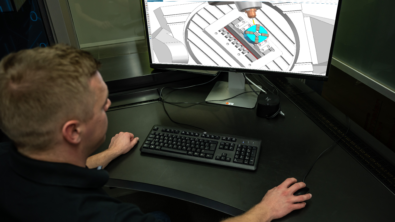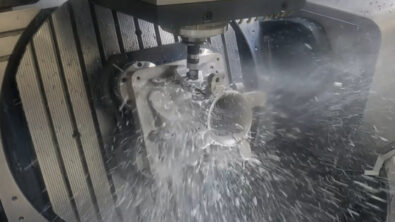Why CAD/CAM Integration Matters
Change is unavoidable
Manufacturers are famously conservative. If it ain’t broke, don’t fix it. They’ll put up with workarounds if it means minimizing change – minimizing risks to their production. But they won’t suffer long under systems that allow errors to creep through and scrap jobs.
That’s why integration matters to numerical control (NC) programmers. Machining the correct geometry is every bit as important as machining with skill and accuracy. If the part geometry is off or, more likely, if an engineering change has been missed or poorly accounted for, then no amount of machining finesse will keep the parts off the scrap heap. The geometry has to be right.
And change is the one true constant. It is relentless. Whatever can be done to minimize the impact of changes – particularly late changes – on the effectiveness of manufacturing must be done. Otherwise the price in scrap, re-work, and scrambling and scurrying will be a high one. When a surprise change feels like the giant boulder rolling down to flatten a panicked Indiana Jones, that’s an indication that you are too vulnerable to changes.
An article at “MoldMaking Technology” highlights the importance of handling change:
“Keep your data organized so you can work in teams, work in parallel and react faster to design changes. For example, using a master model with associativity allows you to update your mold design, NC programs, electrodes and setup sheets when the CAD model changes. Associativity makes design changes go faster and simple changes can be updated automatically— they don’t require reprogramming because they automatically re-adjust. More than one designer can work on the same tool at the same time; and, you can start NC programming before the tool design is completed.”
Productivity boosters
CAD/CAM integration provides more than just a level of immunity from the disruption of change orders. There are helpful productivity benefits as well. The complete product definition provided by a robust CAD system means that the days of specifying surfaces and assigning material sides are gone. Solid models know where their material is. Assemblies represent the entire machining environment with completeness and precision.
Tool path has context. It isn’t just laid on a surface, it knows about the whole part. Operations understand floors and walls and can automatically provide clearances or cleanups, as needed. And if the part changes, the tool path will know that too.
This same geometry context can also provide a solid platform for programming automation. NX™ feature-based machining and coordinate measure machines (CMM) inspection programming make very good use of the model’s product manufacturing information (PMI) data, for example. The “MoldMaking Technology” article includes these points as well.

- Real CAD/CAM integrtaion allows a model-driven process, where multiple manufacturing models and downstream processes can remain
associative to the source model. Changes to the source model propagate quickly across all of the manufacturing steps.
Imported geometry
It is important to acknowledge that imported geometry has to be as meaningful as native geometry. Not everyone in the world uses the same software you do. But there is no reason to give up on the benefits of integration just because you have to deal with multiple geometry sources. Real, comprehensive CAD is able to import geometry so that it is as robust and useful as home-grown geometry – even tracking and mapping faces on updates so that the connected CAM has just as much ability to be associative. It takes grown-up CAD to do that. When a CAM system is tightly integrated to this kind of grown-up CAD, it maintains the full benefits of programming productivity and change tolerance no matter where the geometry started. No system is more “grown up” in this regard than NX. Synchronous technology, surface tracking, and even topology mapping makes it possible to build very associative manufacturing processes on geometry imported from anywhere.
And again, very associative manufacturing processes are able to handle change easily, without disruption. The right part geometry gets manufactured and mistakes are eliminated. With the power and benefits of integrated, associative CAD/CAM, we can think of that scary boulder of change differently. More like the version in the Nationwide Insurance ad where the boulder is suspended ominously over the girl’s head, but shrinks down to a harmless pebble. Reduce your change risk down to a pebble by using real CAD/CAM integration.
Check out NX for Manufacturing Tech Tips
A couple of recent Tech Tips show how to build fully associative manufacturing setups, in-process models, and fixtures:
- How to manage in-process workpieces using associative, integrated CAD/CAM
- Quickly build an associative set of fixtures using Part Modules in NX CAM
See these and many other nifty Tech Tips at the NX Manufacturing Forum


